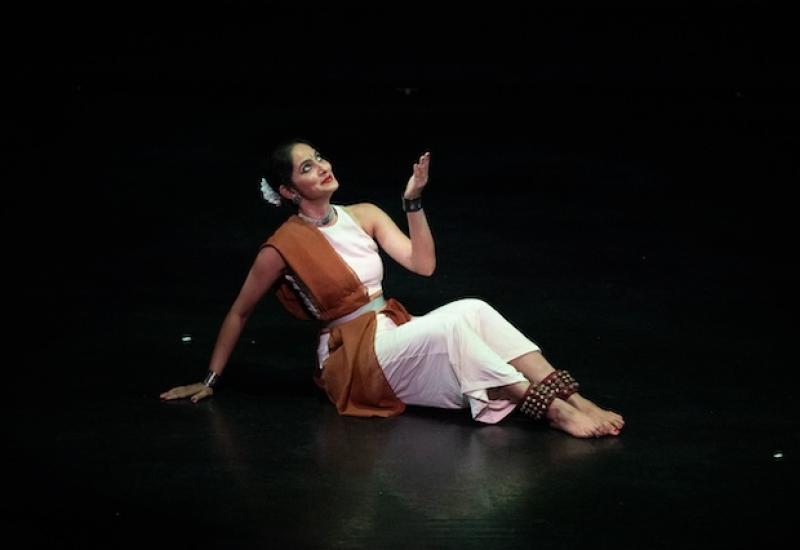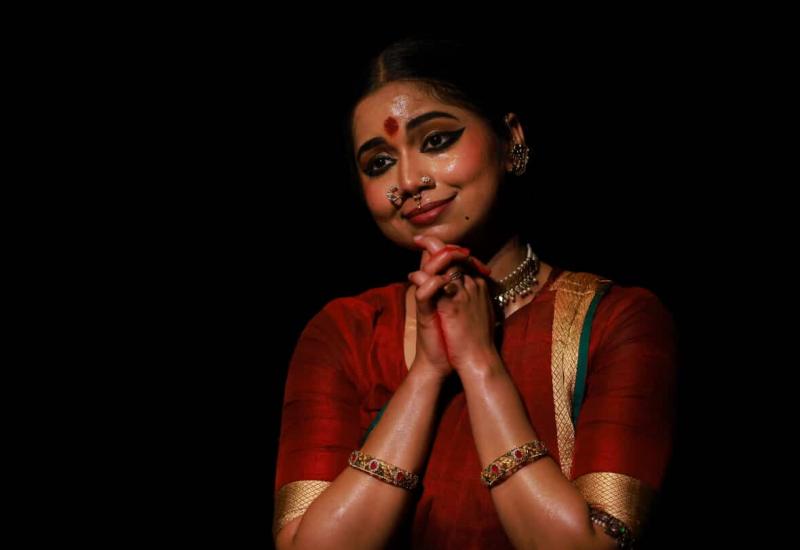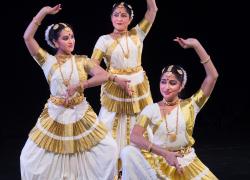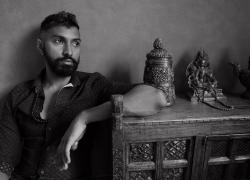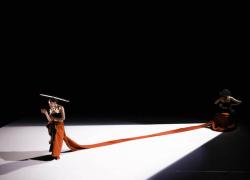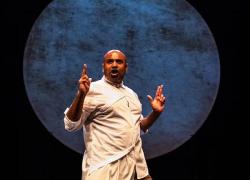Portraits in Otherness
Curated by Akram Khan and his producer Farooq Chaudhry, this well-packaged platform for new choreographic voices was presented as an offshoot of Khan’s mainstage performances of ‘Xenos’ at Sadler’s Wells in June 2018.
Reviewed by Donald Hutera
Portraits in Otherness consisted of two evenings of solos by four up-and-coming international dance artists, split into two double-bills presented for two nights each in the Lilian Baylis Studio. These new works were co-produced with the venue in partnership with China’s Peacock Contemporary Dance Company, a creative entity founded in China in 2017 under the auspices of the iconic dancer-choreographer Yang Liping.
It was fitting, then, that the first budding choreographer on view was Maya Jilan Dong. Now in her mid-20s, Dong has since the age of twelve been a member of a company overseen by Yang Liping. She is also Bai, an ethnic minority of the Yunan Province in southwestern China. ‘Whip’ was inspired by a popular folk dance among the Bai, but modernised and tailored to her interpretive talents.
The solo unfolded as a sometimes playful but essentially theatrical ceremony. Dong’s magnetism in it is based in her physicality and extraordinary concentration. Her body is long, lean and flexible – almost calligraphic at times – and her limbs, especially the rippling arms and spidery, fibrillating and red-dipped fingers, wonderfully expressive. Rather than a whip, her key prop was a long stick. This she balanced on her head, converted into a propeller, played catch with or used to tap shoulders, feet and hips. Some of her motions were martial, yet always measured and occasionally even slowed down. Quick kicks and aggressive poses were countered by short, fast steps and, at two different junctures, an intense, ecstatic circling in place (in the second of which she tied the stick up in her long, silky black hair). Here Dong was like the calm eye of a storm, both turbulent yet focused; afterwards she sat on the floor resting, watchable even in repose. Her capacity to remain mysterious while somehow seeming transparent rendered her always, on some level, mesmerising.
Lasting half an hour, ‘Whip’ was created in collaboration with the composer and cellist Joanne Clara, whose music – supplemented by recorded beats and vocals – she herself played live. Another collaborator, costume designer Marie Cantenys, clad Dong in elegant layers of thin, flowing fabric. But this was Dong’s show: an authentic and sometimes near breathtaking embodiment of sensual yet spiritual possession as well as a demonstration of skill and sheer presence. I don’t know what ‘Whip’ was ‘about,’ but I believed it.

Dong’s solo was paired with that of Dickson Mbi, another dancer with a potent stage presence. Trained in hip hop but equally adept in the realms of contemporary dance, Mbi has made outstanding contributions to work by Russell Maliphant and Boy Blue Entertainment. At the risk of objectifying him, he’s a magnificent specimen – strikingly muscular, sure-footed and capable of operating within a strong dynamic range. But here, treading into big but vague thematic territory, he made what felt like a misstep.
The programme note for ‘Duende’ indicated its fuzzy intentions as an earnest ‘manifestation of the spirit of the artist.’ It began with the stage bathed – for that bit too long – in tenebrous light. Eventually Mbi emerged, bare-chested in white trousers and black socks. What ensued was 20 minutes (it felt longer) of physicalised, soul-searching self-indulgence. Mbi is too much of an eye-magnet for his work to be devoid of interest and, to his credit, he delivered movement and shapes that captured attention: peering over his shoulder in half-crouch, some low-to-the-ground runs of an almost primal nature, a sudden leap (accompanied by a meretricious flash of light) and far too much collapsing. But ‘Duende’ was at bottom a heavy-handed exercise in stylised suffering; when the panther-like Mbi waddled about more like a duck than a big cat, the context was too amorphous to be either amusing or illuminating. A later bout of heebie jeebies was likewise wearying as there was no discernible source for his anxiety. Set to Roger Goula’s score of male wailing, mournfully spare strings and weighty percussion, ‘Duende’ failed to impart something universal with which to identify. It doubtless meant much more to Mbi than to me.
The second brace of ‘Portraits’ put the spotlight on Ching-Ying Chien and Joy Alpuerto Ritter, Khan’s co-stars in his 2016 production Until the Lions. Like the first pairing in this series, it was a case of one hit (more or less) and a miss.
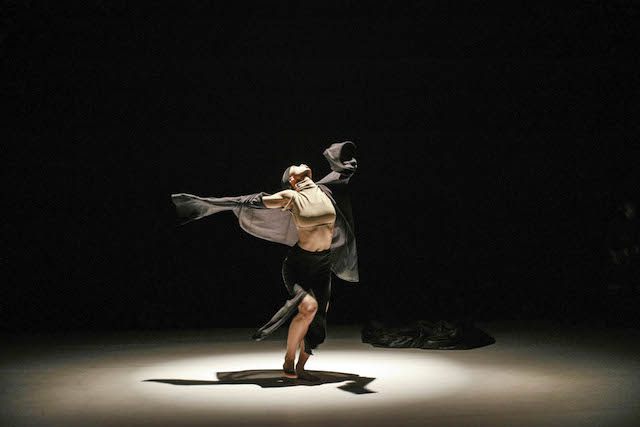
First the miss. Chien’s ‘Vulture’ is derived from a regional Taiwanese myth which has a loose parallel in the Greek tale of Icarus and Daedalus. Chien devised it as an exploration of the life cycle of humans but viewed ‘through the eyes of an animal.’
Things got off to a striking start with guitarist, vocalist and composer Joseph Ashwin drawing a huge, dark fabric across the stage before assuming his place in an upper corner. Chien was hidden centrestage and, in effect, gave birth to herself from beneath the vast black cloth. She’s quite the contortionist, twisting torso and limbs (indeed, her legs seem to have lives of their own) with impressive facility. But her somatic material became repetitive and dull, especially when accompanied by Ashwin’s maundering music. Eventually she rose, spinning and flapping into a jacket cleverly attached to her waist. (The designer was, again, Marie Cantenys.) But here again Chien indulged in an excess of under-shaped motion. Later she rose and sunk back down to floor in stages – simulating death, perhaps. Effective, yes, but the solo’s net result was painfully obscure and, at just over half an hour, too long. Also, despite Chien’s exceptional plasticity, in moments of stillness her body carried no charge, nor did it convey clear insights into the strength or vulnerability of humans or animals.
There was some relief in Ritter’s ‘BABAE.’ Its starting point was the Expressionist solo ‘Witch Dance’ by legendary German choreographer Mary Wigman, but filtered through Ritter’s own roots in Philippine folk dance, classical ballet, hip hop and vogue. I was initially disheartened as Ritter methodically switched on the lights inside of each of a handful of coloured pots dotting the stage, let loose her long, dark hair, donned lipstick and proceeded to flap and claw about while mainly standing in place. It reminded me of bad mime.
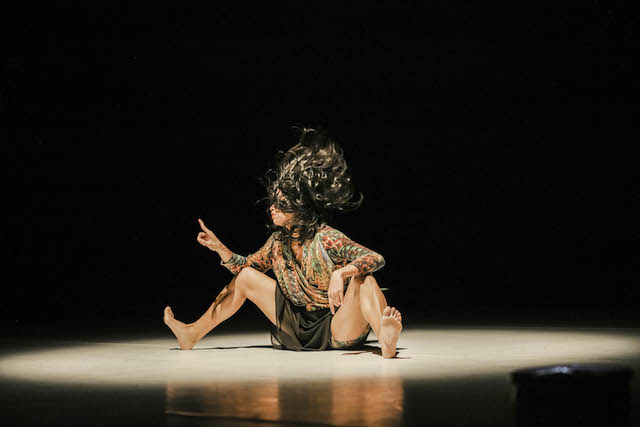
Gradually, however, things improved as Ritter began swaying her hips and twirling her wrists to the sound effects-laden beats of composer Vincenzo Lamagna – in effect, sexing up her own movement vocabulary. As the music waxed even more percussive she gained power, eventually occupying a circle of light. What ensued could be interpreted as a lively representation of fertility ritual and simulated flying (but minus a witch’s broomstick). Ritter hopped, kicked, crouched, loped and jiggled around with manic pleasure, even flinging about a secret stash of red glitter. Her actions communicated a cumulative zest. The solo ended with Ritter exiting after placing all the pots on her head, as if in taking up this burden she was now becalmed.
This platform can be commended for placing a spotlight on young talent. And yet too much of Portraits in Something or Otherness, as I came to think of it, seemed to signpost a lack of choreographic rigour despite relatively high production values. For all that, I’ve taken away images (more than ideas) from all four works, and would be interested in seeing this nurturing project develop further.








